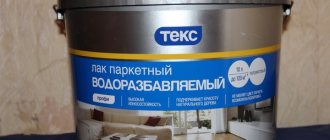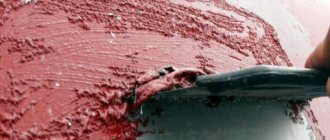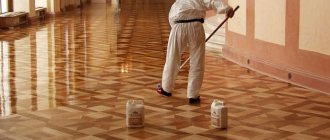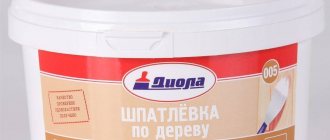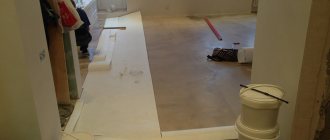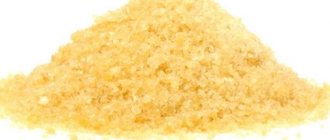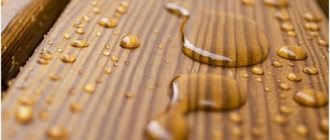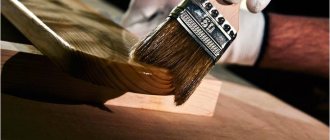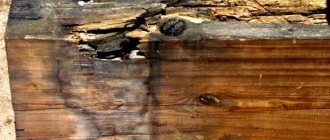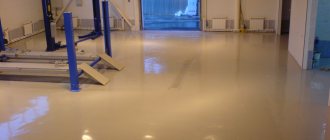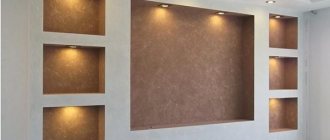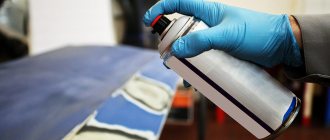Parquet flooring is almost always coated with a special protective varnish. It not only decorates the floors, but also provides additional protection from moisture, dust and damage.
Its consumer qualities are very high - such a varnish will protect wood from the consequences of physical and mechanical influences, giving it an elegant and attractive look for many years.
However, over time, even such high-quality materials can lose their former beauty and freshness - they fade, wear out, and crack.
In order for the floor to return to its original appearance, the old varnish must be removed.
Machine sanding of parquet
There is not always a budget and the ability to attract professional craftsmen for the work.
The cost of their services is quite high, so not everyone can afford to invite specialists to restore old parquet.
However, there is an alternative to remove surface defects. You can do all the work yourself; in this case, you will only have to pay for the purchase or rental (a more profitable option) of equipment and the purchase of modern parquet chemicals.
For a full-scale renovation of parquet, sanding (or sanding) is simply necessary.
At this stage, the old varnish is removed and a thin layer of wood can be removed.
Due to this option, when it is possible to remove inaccuracies, the floor is leveled, because during operation the wooden floor can be slightly deformed.
The number of such sandings in order to remove defects that the parquet can withstand before it needs to be completely replaced depends on the thickness of the boards. For example, a 1.5-centimeter lamella can be scraped up to 5 times, and an 8-mm lamella - no more than three.
You can remove it using a special electrical device.
Machine scraping method
Should I hire professional parquet floorers to solve the problem of restoring wooden floors? Not everyone has this opportunity. Often it all comes down to price. Local restoration can be carried out independently; it is enough to purchase the necessary equipment and fresh parquet chemicals.
Large-scale restoration of the varnish coating will require preliminary scraping or sanding. First you need to determine how many cycles the parquet product corresponds to. The more decorative the parquet, the fewer cycles it has. With a lamella thickness of 15 mm, the floor will withstand up to 5 cycles, 8 mm or less - no more than 2-3 times.
Sanding is carried out with a special electric machine that can be bought, which is very cumbersome, because it is rarely used at home. It is better to rent it from a company that provides such parquet repair services.
You can rent a sanding machine
Manual processing of parquet
There are several techniques for manually processing flooring. Tools are selected in accordance with the thickness of the parquet board.
The amount of work and the material side of the issue are also important.
You can purchase a hand scraper at a hardware store. It is worth noting that materials with a short handle require more labor compared to scrapers with a long handle, but they also remove old varnish better.
A rather dusty but effective method is to remove the varnish with sandpaper.
This is very convenient in cases where you need to clean any fragment of varnish: if a stain has appeared, chipped, cracked, or the varnish layer has worn through.
An additional advantage is the fact that during cleaning, sandpaper simultaneously levels the surface of the wood.
When the varnish has been completely removed, the floor is wiped with acetone - it will remove the smallest particles of coating that go unnoticed.
At the next stage, after the defects have been removed, the BF-6 adhesive composition is applied. It is a solution of phenol-formaldehyde resin and polyvinyl butyral with alcohol and modifying additives.
This product will protect the surface from putrefactive processes, mold formation, negative effects of the external environment, the effects of oils, gasoline, kerosene and water, and the effects of acids. Its resistance to alkaline and alcohol exposure is slightly weaker.
The final stage is wiping the surface with a solvent.
During work, it is necessary to take into account the location of the wood fibers, since a thin layer of wood is cut off during cleaning. To ensure that the surface is not damaged, you need to move along the fibers.
Their position may be different:
- if the annual rings are located perpendicular to the surface of the lamella, this position is called radial;
- the cut is made tangentially to the annual layer of the trunk - this is a tangential cut;
- mixed cut contains features of the previous two.
After cleaning, you will need to apply a primer mixture to the parquet, carefully sand the wood and cover it with a new layer of varnish.
Removing varnish from parquet
Required Tools
Finally, you have decided which varnish is best to cover the parquet after removing the old layer of material. In order to clean parquet from varnish, you must have the following list of products and tools:
- putty mixture;
- grinding machine;
- vacuum cleaner.
Step by step guide
When repairing parquet, it is important to replace the varnish in a timely manner, preventing it from completely abrading and trampled marks appearing on the surface.
Before removing the varnish from the parquet, you need to sand the surface. If the damage is deep and clearly visible, in addition to the varnish substance, an additional 0.5 mm of wood is removed, but no more.
Borrow a grinding machine from your friends that will handle this procedure as gently and accurately as possible. In this case, the room should be well ventilated and ventilated - there will be a lot of dust. You can turn on the vacuum cleaner in advance, which will also remove a certain part of dust particles from the air. Remember to protect your lungs and eyes with protective equipment.
Before starting the sanding procedure, thoroughly cover all the cracks with putty, wipe the floor with a slightly damp cloth, thus clearing it of dirt. Now start sanding. This work is painstaking and cannot be rushed. A small household sander may require several days of sanding on the floor.
It is necessary to prime the surface before applying varnish
Experts point out that if the parquet is too damaged, it must be sanded, which is carried out using a drum machine. In everyday life, this procedure looks somewhat different. First, an abrasive is taken to remove the paint, then all visible gaps are covered with putty mixture. After that, a medium-hard abrasive comes into play, which negates the remaining rough scratches. The final stage is cleaning the parquet with a fine abrasive. This floor is covered with at least 2 layers of varnish.
"Folk" instruments
You can remove old varnish not only with your own hands, but also with your feet. Despite the funny sound, this method is quite popular due to its simplicity - after all, you only need to walk, shuffling with the soles of your shoes.
To obtain the expected result, the sole must be flat. Sandpaper (40 abrasive) is glued onto it and the entire floor is thoroughly “scraped.”
Then the sandpaper is changed to 80-grit and passed over the parquet again. At this stage, its surface is polished.
Some people use homemade cycles made from tools available around the house.
For example, a plane with a hooked edge.
To make such a cycle, you need to heat the sharp metal end of the tool red-hot, cool it a little and clamp it in a vice with a pipe.
Lightly tap the heated metal with a hammer, giving it a rounded shape along the pipe. Adjust the angle if necessary, reheat and sharpen the outer side of the resulting bend.
It is more convenient to use a homemade scrubber. The procedure for its manufacture is similar to the previous one.
Such a tool can often be found in the hands of sailors, ship repairers and shipbuilders - they can easily remove rust, deep dirt and remnants of old paintwork.
What are the methods for removing varnish?
Mechanical method.
Using sandpaper, a special attachment on a drill, or a sanding machine, remove the varnish layer from the wooden surface. In this case, the top layer of the tree may be damaged. This method is generally not suitable for restoration work.
Thermal method.
By burning a painted wooden surface with a blowtorch or a hair dryer, the varnish is peeled off, and then it is removed with mechanical devices (a spatula, chisel, sandpaper). A tree can change its structure. The method is fire hazardous and toxic.
Chemical method.
How to remove varnish from a wooden surface is decided by experts, who determine several important factors when choosing a remover:
- what varnish is used to paint the surface?
- thickness of varnish layers;
- what kind of wooden product is varnished;
- degree of adhesion of varnish to wood;
- type of subsequent processing (varnishing, painting, etc.).
The effectiveness of removing varnish and preserving the top layer of a wooden surface, especially on furniture and parquet, depend on these components.
conclusions
Cleaning parquet floors yourself is difficult, but possible. This will significantly save the family budget, because expensive services of specialists will not be required.
Careful implementation of the recommendations, the correct choice of technology and tools, as well as compliance with safety precautions (use of a mask, goggles, gloves and a respirator) will ensure excellent results and allow the updated parquet to last for a long time.
Chemicals for removing varnish
- Cleaners and detergents that can be used to remove a thin layer of varnish on a polished wooden surface. You just have to rub it well with a stiff brush to peel off the varnish.
- Organic solvents (white spirit, solvent, etc.) are used for strong adhesion of the varnish to the surface. To clean wood, the solvent is sprayed or sponged onto the varnished surface, left to soak, and then mechanical devices are used, depending on the thickness of the varnish layers. The thinnest layers are removed with simple sandpaper, and several layers have to be removed with a spatula.
- Special chemical removers, gel- or powder-like, in a ready-made solution, can be used for different types of varnish.
How do special washes work?
- Removes the thickest layers of varnish.
- Cleans the pores of untreated wood into which the varnish has been absorbed.
- The highest degree of adhesion will be destroyed if a thick layer of gel-like mass or paste is applied to a wooden surface with a spatula or brush. The action time is indicated in the instructions, but it is better to leave the product for a full chemical reaction for 2-4 hours, observing changes on the surface. To enhance the effect, wooden products are covered with a film (the so-called “compress”).
- The surface cleared of varnish is washed off with water and wiped dry with a rag. After complete drying, the wooden surface is ready for new painting.
LEVELING PARQUET FLOORS BY GRINDING
Figure No. 1. Parquet laid in a herringbone pattern is sanded alternately in directions parallel to the laying of parquet rivets. For example, using 40-grit sandpaper, the parquet is first processed in direction A, and after loading the machine with 80-grit sandpaper, the floor is sanded in direction B. Then again in direction A, but with even finer sandpaper, and so on.
Figure No. 2. Plank floors and parquet floorboards are sanded diagonally (at an angle of 45° to the edges of the boards) in two directions (A and B). And in this case, on each section of the floor, the grinding machine moves forward and backward.
Figure No. 3. The first pass when sanding mosaic parquet is carried out using 40-grit sandpaper. The floor is processed in direction A. When replacing 40-grit sandpaper with 80-grit sandpaper, the grinding machine is turned 90° and the floor is processed in direction B. Then, changing the sanding skin to a thinner one, process again in direction A and so on.
Types of varnishes
The main characteristic of all varnishes is their composition.
There are water-based and oil-based varnishes; in addition, there are alkyd, polyurethane, epoxy, as well as craquelure and epoxy compositions. All of them are suitable for restoring old furniture, although they have both their advantages and disadvantages that must be taken into account.
Video:
Very often, alkyd varnish is used for furniture. It contains various groups of resins, as well as organic solvents.
These varnishes are characterized by high strength, excellent moisture resistance and good aesthetic characteristics.
Their significant disadvantage is the long drying period, as well as the presence of an unpleasant odor.
For the production of oil varnishes for furniture, all kinds of resins, oils of plant origin, as well as organic solvents are used.
It is best to use these compounds when it is necessary to perform a primary coating.
Furniture varnishes also include nitro varnishes. To prepare them, colloxin, various plasticizers, and resins are taken in different proportions.
The disadvantages of such varnishes include low environmental friendliness and the presence of an unpleasant odor, which precludes their use in a children's room.
Epoxy coating is also used for applying to furniture, which is highly resistant to abrasion and various mechanical stress.
Polyurethane varnishes are very popular, which are widely used not only in the furniture industry, but are also very often used for interior decoration.
Water-based acrylic compositions are considered the safest and most fire-resistant. They do not have a strong odor, are safe to use and can be used to cover children's furniture.
In order to correctly decide which varnish to choose, you must first decide not only on the type of surface, but also on the subsequent conditions of its operation.
Instead of an afterword
Any attempts to manually remove varnish from a parquet floor require maximum effort, care and accuracy. The difficulty lies in the fact that you need to constantly control the cutting force of the parquet and monitor the sharpness of the tool. Dust and dirt cannot be avoided.
Therefore, it does not hurt to use personal protective equipment: a respiratory mask, gloves, goggles. At the same time, restoring wooden floor coverings yourself is quite possible and much cheaper than the services of parquet specialists.
Undoubtedly, parquet is one of the most reliable and durable types of coating, especially if it is coated with a particularly durable and resistant varnish. However, the floor is meant to be walked on, and no matter how hard you try, no matter how much you take care of it, sooner or later there comes a time when it wears out.
There are no strict deadlines for when it is necessary to remove the varnish from the parquet and replace it with a new one. This is an absolutely individual moment, depending on many factors:
- in which room (by purpose) the parquet flooring is located;
- whether all the rules for laying parquet and applying varnish to it were followed;
- are the correct care products used, etc.
Most often, in an ordinary living space, where people walk on the floor in slippers or barefoot, replacement of the varnish coating is required at intervals of 10-15 years. If there is obvious damage to the parquet caused by pets or any household causes, this procedure may be needed much more often. In office premises, where hundreds of people in street shoes walk on parquet floors every day, the varnish should be removed, the paint removed and the floors re-coated annually.
In order to completely remove the old varnish coating from the parquet, you will need a vacuum cleaner, putty and a belt sander.
